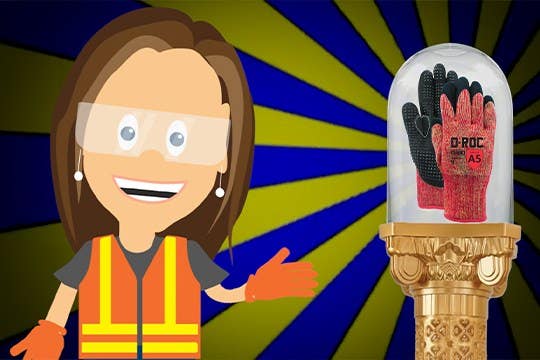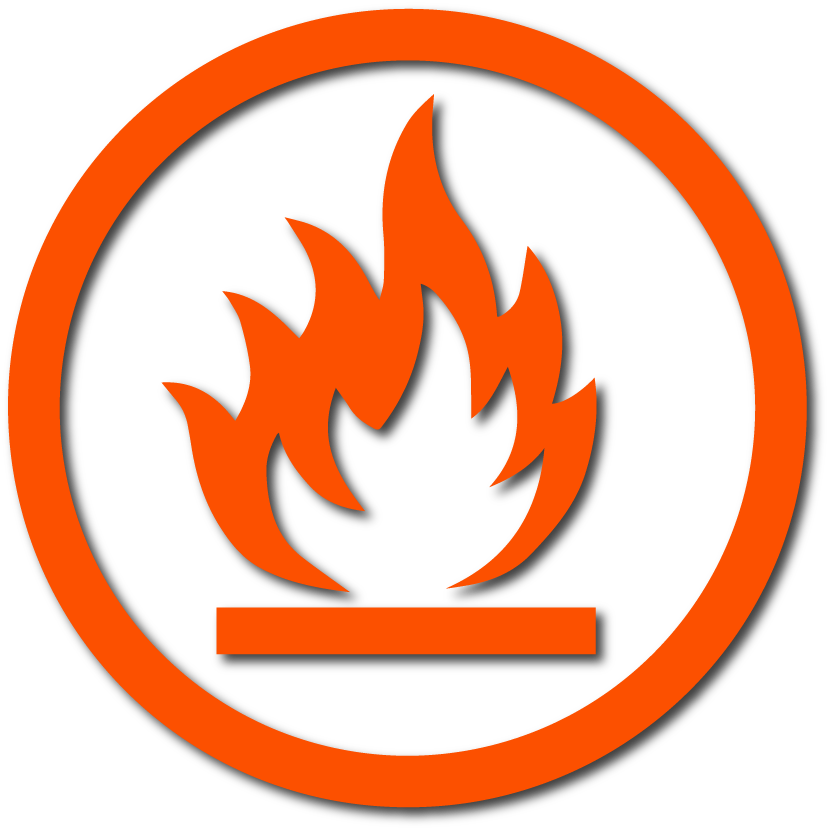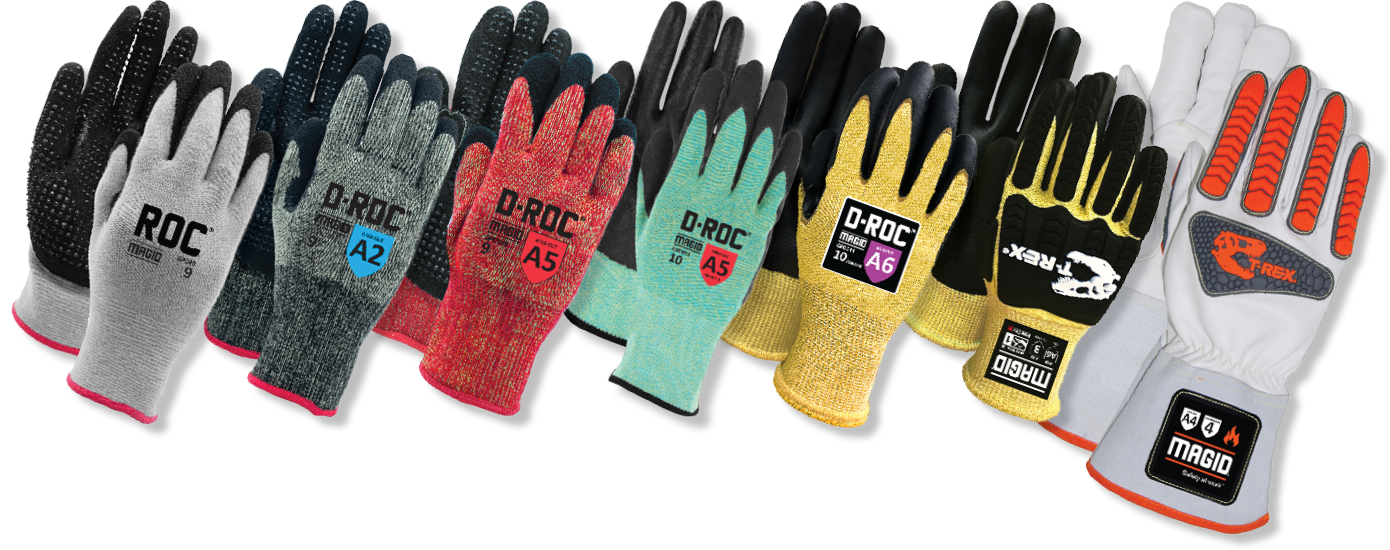
Finding the Right Heat Gloves for Your Application
By John Heniff, Safety Writer, Magid
Heat-resistant work gloves allow your workers to operate with cautious ease while protecting themselves from contacting dangerously hot surfaces and conditions. Unfortunately, even with protection available, heat hazards caused 7,020 thermal burns to workers’ hands, wrists, and arms in 2019 according to the Bureau of Labor Statistics. So whether your workers handle hot textiles, maintain pipes and heating equipment, or do other hot handling work, there are a number of options you can consider to find the best protection.
FACTORS TO CONSIDER FOR HEAT PROTECTION
The right heat-resistant glove for your application depends on a number of factors involving the hot objects being handled. The more of these you have in the application, the higher heat protection you’ll need:
- Temperature
- Weight
- Amount of time it's held
- Frequency of a task
- Grip


COMMON HEAT-RESISTANT MATERIALS
Different heat-resistant materials provide varying degrees of protection.
| Material | Pros | Cons |
|---|---|---|
| AeroDex FR® | Provides incredibly light cut resistance and flame resistance without the itch, thickness, or discomfort of traditional FR materials | Ideal for contact heat and brazing, but not appropriate for heavier welding jobs. |
| Leather | Has natural flame-resistant properties and good abrasion protection. Can be one of the more affordable options to choose from. | Traps heat close to the skin, can harden from heat over time, and doesn’t have a high-degree of cut-resistance. Provides less dexterity than some other glove materials. |
| Terrycloth | Looped knitting traps air and creates more insulation. Has some degree of cut and abrasion protection and is comfortable to wear. | May absorb liquids and become saturated, not as dexterous as other materials. |
| Aramid | Inherently flame-resistant and has a high degree of cut-resistance and dexterity. | Can be one of the more expensive options to choose from. |
| Acrylic | Glove liners add insulation for high heat contact as well as improved durability. | Can feel heavy when formed as a glove shell. |
| Aramax® | Draws heat away from the skin, can be designed for added flame-resistance. Great for warm environments where flames and sparks are present. | Not designed for high heat applications. |
DIFFERENT DEGREES OF PROTECTION IN HEAT RESISTANT GLOVES
Once you’ve determined your needs and the best materials, it’s time to consider whether workers need any specialized protection from other hazards in their application. Different hazards need different solutions, so your workers may need a glove with one or multiple protective features.
Fundamental Heat Protection
For basic heat protection without any specialized features for hazards like molten liquids, common materials can be combined to provide different levels of contact protection. Aramid yarns can be machine-knit into a thinner, more form-fitting glove that delivers different levels of heat resistance. Compare different heat-resistant materials and keep an eye on their ASTM F1060 (according to the ANSI 105 standard) or EN 407 ratings to find a glove with the heat resistance to match your application.
| ASTM F1060 | Heat Resistance |
|---|---|
| Level 0 | Less than 176⁰ F (80⁰ C) |
| Level 1 | 176⁰F (80⁰ C) |
| Level 2 | 284⁰F (140⁰C) |
| Level 3 | 392⁰F (200⁰C) |
| Level 4 | 500⁰F (260⁰C) |
| Level 5 | 608⁰F (320⁰C) |
| EN 407 Contact Heat Resistance | Heat Resistance |
| Rating 1 | 212⁰F (100⁰C) |
| Rating 2 | 482⁰F (250⁰C) |
| Rating 3 | 662⁰F (350⁰C) |
| Rating 4 | 932⁰F (500⁰C) |
Heat Dissipation
For higher heat applications such as handling hot steel or ceramic molds, if a glove can’t disperse built-up heat over time, heat stress will collect within the glove and make it less comfortable. Machine-knit gloves allow for more breathability by dispersing heat through the back of the glove.
Cut & Laceration Protection
Your workers may need a glove with durable cut-resistance and abrasion protection on top of proper heat resistance if they work with cut hazards. New gloves are available with cut level protection to defend against sharp edges in addition to hot surfaces.
Types of Grips & Palm Coatings
Applications that require more dexterity and hand-movement such as grabbing a hot part out of an oven have led to the development of high-strength, heat-resistant gloves with more grip and control for handling hot and heavy materials. Added features such as nitrile-based palm dots on top of a nitrile or silicone palm coating further insulate a worker’s hands while simultaneously improving the glove’s grip.


HEAT-RESISTANT GLOVES WITH MULTIPLE LEVELS OF PROTECTION
Depending on the job, you might need a glove that protects against all of these things! The best all-around heat-resistant gloves use a combination of material layers to protect to Level 5 ASTM F1060 (according to the ANSI 105 standard) or Level 4 EN 407 contact heat certifications for the highest standardized levels of heat-resistant protection. They can also provide cut resistance, versatile finger movement, added grip, and protection from heat, all contained within a breathable shell that allows for the transfer of heat.
Consider your application and let workers try a few gloves out for themselves. With a little testing and knowledge, the protection your workers need can always be close at hand!


Get a glove with the highest level of heat protection and more!




